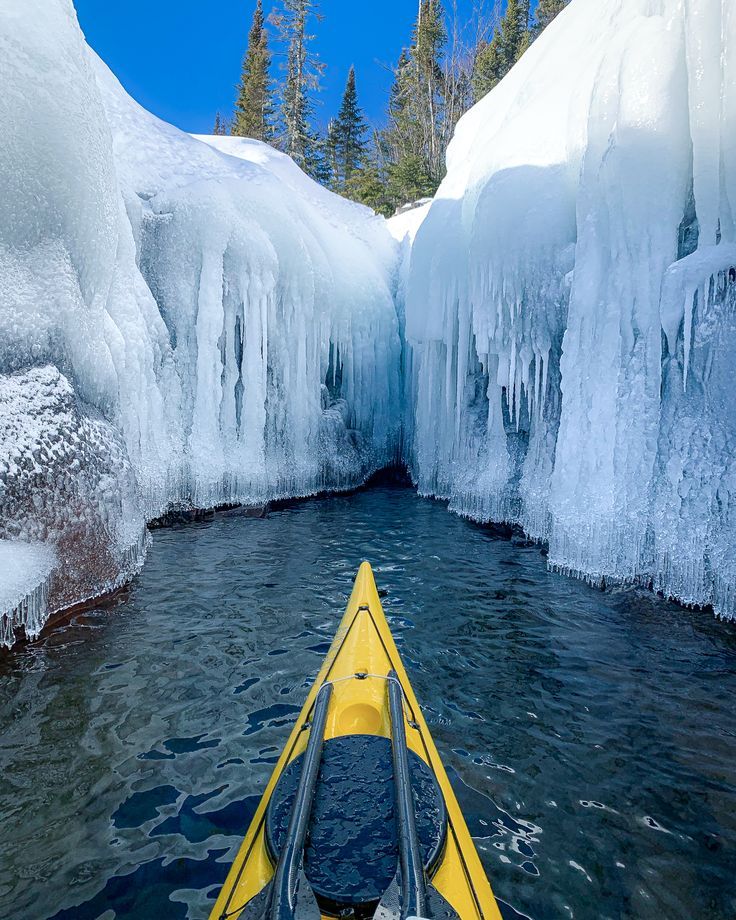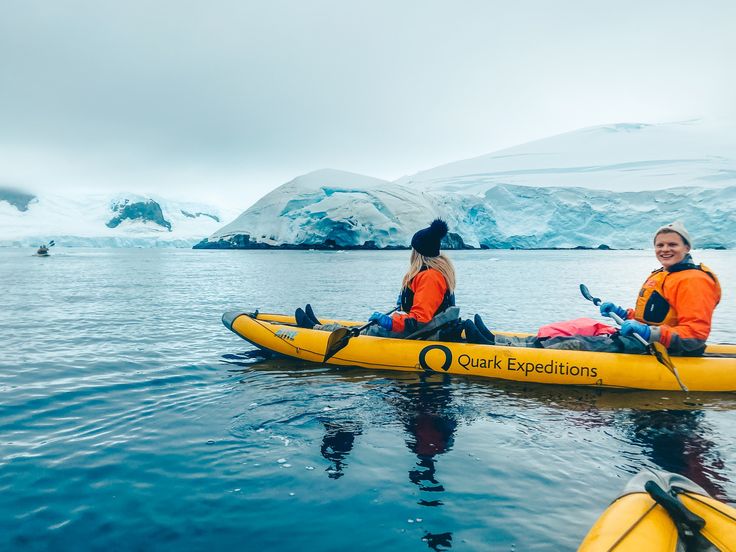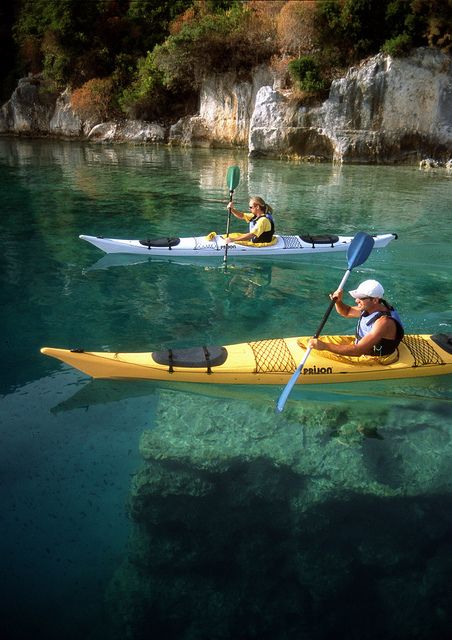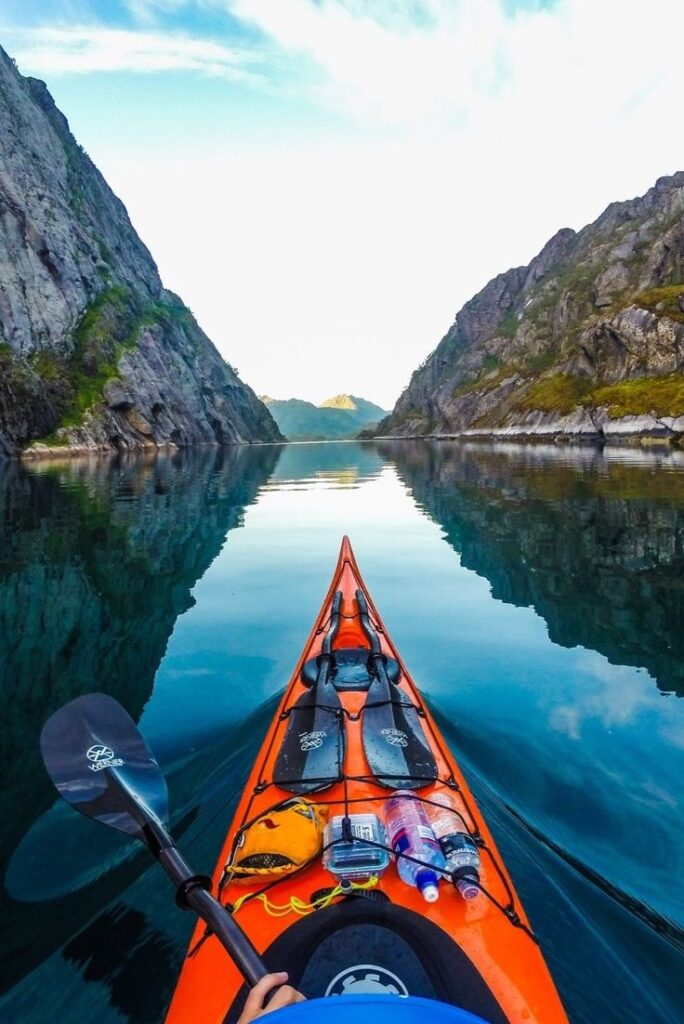Kayaking in the winter is not a typical outdoor activity. Imagine the quiet hush of snow-blanketed banks as you glide through icy waters, the solitude of winter providing a stark backdrop against the vibrant wildlife. This is the unexpected appeal of paddling in the chillier months. While most pack up their kayaks as the temperatures drop, you unearth an adventurous side of nature that few get to witness.
To embark on such an adventure, thoughtful preparation is crucial. A winter kayaking trip is about respecting the elements and outfitting yourself with the right gear. It involves understanding the unique challenges that cold weather brings and adopting practical paddling techniques to navigate them. You wear layers designed to insulate and protect, plan your route with care, and always keep safety as the primary concern. There’s an undeniable charm and a sense of achievement in braving the cold to experience waterways that are often unseen by seasonal kayakers.
As you return from your journey, cocooned in warmth after shedding your cold-weather shell, the experience doesn’t simply end. You’re equipped with newfound knowledge and memories, plus answers to questions that many have yet to ask. After all, you’ve done more than kayak in winter—you’ve expanded your understanding of what it means to truly engage with the outdoors, no matter the season.
Planning Your Winter Kayaking Trip
When preparing for winter kayaking, it’s essential to understand weather patterns, select suitable destinations, and prepare gear meticulously.
Understanding Weather Patterns
Interpreting weather forecasts accurately is crucial before a winter kayaking trip. You’ll need to assess temperature, wind, and possible precipitation. Services like the National Weather Service (Check the weather now!) provide reliable forecasts. Remember that conditions can change rapidly in winter, so stay updated even during your trip.
Selecting Destinations
Winter kayaking offers solitude as crowds dwindle, but choosing the right destination is vital. Consider spots with calm waters and easy access to emergency services. Destinations like Alaska and Norway offer breathtaking winter sceneries, while Canada and Finland boast a multitude of lakes and coastlines suitable for all experience levels. Use maps and a GPS to navigate these remote areas safely.

Photo by Maddy
Preparing Your Gear
Ensuring you have the right gear is essential for safety and comfort. Here’s a checklist:
- Kayak: Inspect for damage.
- Paddle: Appropriate size and spare.
- Personal Flotation Device (PFD): Must fit and be season-appropriate.
- Clothing: Dress in layers using materials like wool or synthetics that wick moisture away.
- Safety Equipment: Whistle, knife, headlamp, and compass.
- Emergency Kit: First aid, fire starter, and emergency shelter.
- Communication: Waterproof VHF radio or a satellite phone.
Your gear must match the demands of winter’s harsh environment. Always test your equipment before the trip.
Essential Gear and Clothing
When kayaking in winter, the right gear and clothing are critical for comfort and safety. Be prepared with appropriate layers and safety equipment suited to cold water conditions.
Dressing for Immersion
If you capsize, your clothing should protect against cold water and help prevent hypothermia. Start with thermal layers that wick moisture away from the skin. Your next layers must provide insulation; fleece or specialized paddling garments are ideal. The outermost layer should be a drysuit or a wetsuit—particularly when water temperatures are below the 120-degree rule. Always opt for a PFD (Personal Flotation Device); it’s not just a legal requirement, but it also adds a layer of insulation. Protect your extremities with neoprene gloves and neoprene boots to maintain body temperature. A neoprene hood can prevent significant heat loss through your head.
- Top Layers:
- Base: Moisture-wicking thermal shirt
- Middle: Fleece or paddling jacket
- Outer: Drysuit (preferred) or wetsuit
- For Hands and Feet:
- Gloves: Neoprene gloves or pogies
- Footwear: Neoprene booties or kayaking boots
Packing Safety Equipment
Safety equipment is essential for winter kayaking. Always carry a dry bag with extra clothing; if you get wet, changing into dry garments is vital. Include a thermos with a warm drink to help warm up from the inside out. A spray skirt will keep water out of the cockpit, and help maintain your body temperature. Even in winter, sunscreen is necessary to protect against reflective UV rays, and a neck gaiter can serve as both sun protection and added warmth. Make sure your paddle is suited for the conditions; having an extra one can be a lifesaver. Lastly, a bilge pump and a whistle should be part of your safety kit.
- Essential Gear:
- Dry bag with spare clothing
- Thermos with hot beverage
- Bilge pump
- Whistle for emergencies
- Sunscreen and neck gaiter
- Optional:
- Extra paddle
- Waterproof outer layers for extra protection

Photo by Kylie & Scott
Navigating the Challenges
Winter kayaking presents unique hurdles, requiring smart preparation and the right gear to ensure safety and enjoyment. Understand how to maintain core body temperature and tackle the harsh elements effectively.
Maintaining Body Temperature
You must stay vigilant against cold shock and hypothermia when kayaking in winter. An unexpected immersion in icy waters can lead to a sudden and dangerous drop in body temperature. To defend against this:
- Layer Up: Wear a wetsuit or drysuit designed for cold water immersion. Always have an extra set of clothes in a waterproof bag.
- Keep Dry: Use waterproof gloves and socks to prevent frostbite and retain warmth.
Dealing with Elements
Winter doesn’t just bring the cold; poor visibility, snow-covered landscapes, and unpredictable wildlife also pose significant risks. Strategic planning and preparation are your lifelines out on the water:
- Visibility: Always check the weather forecast and daylight hours; fog and early dusk can disorient you quickly.
- Snow and Ice: These can obscure landscape features, making navigation tricky. Always carry a map and compass or a GPS device.
- Float Plan: Leave a float plan with someone onshore, detailing where you’re going and when you plan to return.
- Emergency Supplies: Pack a safety kit including signaling devices to call for help, fire-starting materials, and a first-aid kit.
By mastering these techniques and safety measures, you can experience the unique tranquility of winter kayaking amidst nature’s stark beauty.

Photo by Exodus Travels
Practical Paddling Techniques
When kayaking in winter, you must adapt your paddling techniques for safety and comfort. These methods help you navigate cold waters smoothly and enjoy the serene beauty of nature.
Solo and Group Paddling
Solo Paddling:
- Plan ahead: Chart your route and inform someone of your itinerary.
- Stay visible: Wear bright clothing and use reflective tape on your kayak and paddle.
- Be prepared: Pack a first-aid kit and carry a whistle for emergencies.
Group Paddling:
- Stay close: Maintain a distance where you can communicate visually and verbally with ease.
- Assign roles: Designate a lead and sweep paddler for group coordination and safety.
- Buddy system: Pair up to keep an eye on each other, particularly in challenging conditions.
Handling Your Kayak in Cold Water
Entering and Exiting:
Use caution: Approach the launch point carefully to avoid slips.Steady yourself: Hold onto the dock or shore to stabilize your kayak as you enter or exit.
Paddling in the Cold:
- Dress appropriately: Layer with fleece for warmth and wear a waterproof outer layer to stay dry.
- Control your kayak: Use assertive, steady strokes and maintain a rhythm to navigate effectively.
- Equipment checks: Ensure you have a reliable headlamp for low light conditions and that all gear is secured.
By incorporating these paddling techniques, you’ll enhance your winter kayaking adventure, absorbing the stark beauty of nature while mitigating risks.
After the Adventure
When the exhilaration of winter kayaking wanes, it’s vital to focus on warming up and ensuring your gear is in top shape for the next outing.
Warming Up Post-Paddle
Once ashore, the first step is to replace any wet clothing with dry, insulated layers to avoid hypothermia. Immediately consume a warm drink, like hot chocolate or herbal tea, to raise your core temperature. Engage in a light workout to maintain circulation; jumping jacks or a brisk walk can suffice. It’s essential to keep moving rather than staying idle.
- Warm Drinks: Hot chocolate, herbal tea
- Activities: Jumping jacks, brisk walk
Equipment Maintenance
After you’re warmed up, attention must turn to equipment care. Rinse your gear with fresh water to prevent salt or dirt buildup, particularly the kayak and paddle. If you pack ice for your trip, ensure it’s fully drained and dried before storage. Inflatable kayaks need to be dry to avoid mold and mildew.
- Kayak Maintenance: Rinse with fresh water, dry thoroughly
- Gear Storage: Remove ice, ensure gear is dry before storage

Photo by Hand Luggage
Frequently Asked Questions
Venturing out in a kayak during winter requires extra precautions. Here are answers to common questions about cold-weather paddling.
Q:How can I ensure safety when kayaking in cold water temperatures?
A: Safety in cold water begins with never paddling alone. Inform someone on land about your plans and expected return time. Use a kayak specifically designed for cold conditions and equip it with flotation devices. Carry a communication device secured in a waterproof bag for emergencies.
Q:What are essential gear recommendations for winter kayaking?
A: Essential gear includes a drysuit or wetsuit, neoprene gloves and boots, a thermal base layer, and a life vest. Ensure you have a bilge pump, paddle float, and navigation tools. Brightly colored clothing increases visibility.
Q:Can you explain the differences between a drysuit and a wetsuit for kayaking?
A: A drysuit is a watertight suit that keeps you dry and should be worn with insulating layers underneath. It’s suitable for very cold conditions. A wetsuit, on the other hand, is made of neoprene and designed to allow a thin layer of water in, which your body heats up, providing warmth.
Q:What tips can you offer for keeping warm while kayaking in chilly conditions?
A: Keeping warm revolves around proper attire and activity. Layering clothing for insulation, using thermal materials, keeping extremities covered, and actively paddling ensure warmth. Avoid cotton as it retains moisture. Regularly consume warm fluids and high-energy foods.
Q:How does kayaking in winter differ from other seasons, and what should I be prepared for?
A: Winter kayaking presents challenges like icy conditions, cold water, and unpredictable weather. Prepare by mastering self-rescue techniques, understanding tides and currents, and recognizing signs of hypothermia. Take shorter trips and choose sheltered routes.
Q:Are there specific guidelines for storing your kayak during the off-season?
A: Store your kayak off the ground, ideally on a rack, away from UV exposure which can degrade the material. Cover the cockpit to prevent wildlife from entering. If storing outdoors, use a weather-resistant tarp. Indoor storage is optimal to prevent freezing and thawing cycles that can damage the hull.


good tips